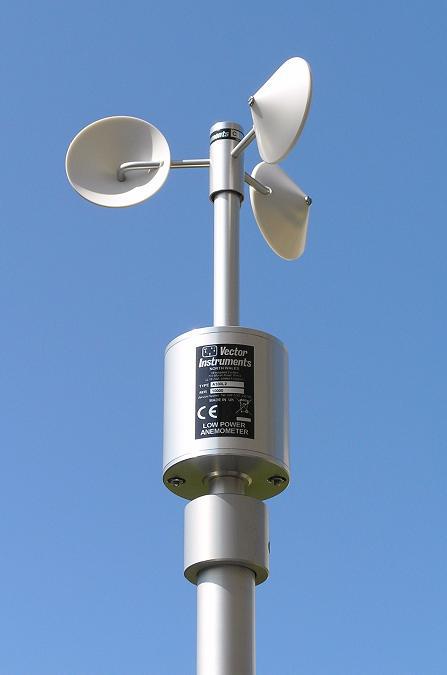Anemometer Innovations: The Latest Modern Technology for Wind Speed Dimension
Anemometer Innovations: The Latest Modern Technology for Wind Speed Dimension
Blog Article
Discovering the Functions and Benefits of Anemometers for Weather Condition Fanatics and Experts
From mug anemometers to sonic anemometers, each type brings its unique set of advantages and applications, dropping light on different aspects of atmospheric problems. As we dive right into the features and advantages of anemometers, a deeper understanding arises not only of prevailing weather sensations however additionally of the wider implications for markets like wind energy production and ecological research.
Value of Anemometers in Climate Tracking
Anemometers play an important function in weather tracking by offering accurate measurements of wind rate, assisting in projecting and understanding climate patterns. These instruments, varying from conventional mug anemometers to contemporary ultrasonic anemometers, are vital for meteorologists, researchers, and climate enthusiasts alike. By gauging wind rate, anemometers help in establishing the intensity of weather sensations such as tornados, tornadoes, and cyclones. Furthermore, they give important information for aeronautics, maritime operations, and different sectors that are sensitive to wind conditions.

Kinds of Anemometers and Their Applications
The most usual types of anemometers include cup anemometers, vane anemometers, hot-wire anemometers, and ultrasonic anemometers. Cup anemometers consist of 3 or four mugs placed on straight arms that rotate with the wind, determining its speed. Vane anemometers, on the various other hand, utilize a freely rotating vane to align with the wind instructions, providing both wind rate and instructions dimensions.
Each sort of anemometer has its one-of-a-kind advantages and applications. Mug anemometers are robust and ideal for general weather tracking, while vane anemometers are favored for directional measurements. Hot-wire anemometers are delicate to low air speeds, making them suitable for interior settings. Ultrasonic anemometers are non-intrusive and supply high accuracy, typically utilized in research study and specialized climate tracking applications. Recognizing the qualities and applications of each kind of anemometer is important for choosing one of the most proper instrument for particular climate keeping an eye on requirements.
Advantages of Using Anemometers in Forecasting
In weather forecasting, the use of anemometers offers important benefits for improving the accuracy of climate projecting. Anemometers determine wind speed and direction, providing crucial data for predicting weather condition patterns. By integrating wind data into forecasting designs, meteorologists can better comprehend the motion of weather condition systems, prepare for modifications in weather, and problem much more exact projections.
Furthermore, anemometers play a crucial function in assessing possible climate dangers. Keeping track of wind rates aids forecasters anticipate severe weather condition events such as storms, tornadoes, and winter months tornados with greater precision. This very early caution system makes it possible for authorities to release prompt notifies and apply needed precaution, lowering the dangers to life and property.
Additionally, anemometers aid in enhancing renewable resource manufacturing. By assessing wind patterns, meteorologists can determine suitable locations for wind ranches and predict energy output, contributing to the effective generation of wind power.

Anemometers in Wind Energy Production
Offered the critical function anemometers play in giving accurate wind data for weather forecasting and risk evaluation, their value reaches the world of wind energy production. Anemometers are crucial instruments in the field of wind power, where the measurement of wind rate and instructions is important for figuring out the expediency and efficiency of wind turbine installations. By accurately determining wind rates at differing heights, anemometers aid maximize the positioning and design of wind turbines to maximize energy outcome.
In wind ranches, anemometers are tactically put to collect real-time wind information that is utilized to analyze the possible power production of a website. This data contributes in establishing the economic feasibility of wind energy tasks and in projecting energy generation to make sure grid security. Furthermore, anemometers help in checking wind problems to optimize generator performance, protect against damages from high winds, and make certain the safety of workers operating in the area of wind generators.
Enhancing Weather Condition Understanding With Anemometers

Anemometers play a vital function in enhancing our understanding of microclimates. These localized climate condition can vary considerably from wider local forecasts, making it important to have precise information for particular anemometer areas. anemometer. By tactically putting anemometers in various areas, scientists can gather detailed info on how wind behaves in various surfaces, urban atmospheres, or bodies of water
Moreover, anemometers add to enhancing climate forecasting versions by supplying real-time data on wind behavior. This information is especially useful for forecasting extreme weather condition events, enhancing farming practices, and sustaining markets like aviation and maritime navigating. Overall, anemometers are invaluable instruments that allow us to dive much deeper into the complexities of climate systems, ultimately leading to even more better-informed decisions and exact predictions.
Conclusion
In final thought, anemometers play an important function in weather monitoring and forecasting by measuring wind speed and instructions. They are important tools utilized by weather enthusiasts and professionals to collect precise information Home Page for predicting weather patterns and assessing prospective impacts. Anemometers also have applications in wind power production, more highlighting their importance in both meteorology and pop over to this web-site renewable resource fields. In general, anemometers contribute to boosting our understanding of weather sensations and improving forecasting capacities. anemometer.
From mug anemometers to sonic anemometers, each kind brings its distinct collection of applications and advantages, dropping light on various elements of climatic problems. These instruments, ranging from traditional cup anemometers to modern-day ultrasonic anemometers, are vital for meteorologists, researchers, and weather condition enthusiasts alike. The most common types of anemometers include mug anemometers, vane anemometers, hot-wire anemometers, and ultrasonic anemometers. Cup anemometers are appropriate and robust for basic weather condition monitoring, while vane anemometers are favored for directional dimensions. Anemometers are essential tools in the field of wind energy, where the measurement of wind speed and instructions is vital for identifying the usefulness and effectiveness of wind generator installations.
Report this page